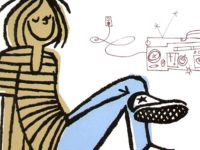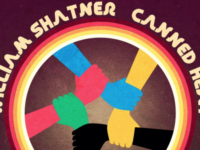There had been moments of avant-garde noise sprinkled amongst the nihilistic junkie-pop on 1967’s Velvet Underground and Nico. But nothing, really, to prepare you for this ferocious cacophony.
Producer Tom Wilson had taken over after the twin departures of actress-turned-chanteuse Nico and band sponsor Andy Warhol, and it’s said he actually left during the inner ear-rearranging sessions for “Sister Ray.” That was just one of the many tension-lathered, darkly abrasive exclamations to be found on the Velvet Underground’s thunderous followup from Jan. 30, 1968.
What you hear on White Light / White Heat is the first flowerings of the looming DIY movement, both in the album’s gritty focus on noise making and in the late Lou Reed and company’s stubborn refusal to play by the rules. And this was eight years before anybody had put a label on such things. If the project couldn’t be described as especially listenable for your average fan of so-called classic rock, then it’s easy to see why White Light / White Heat has remained so critically beloved. This is the sound of a band drawing determinedly outside the lines.
An anniversary super-deluxe edition spanning three discs and 30 tracks upped the ante, combining all of the original project’s still-resonant verve with several deeply insightful never-before-heard moments. Conceived in cooperation with Cale and with Reed before his untimely passing, this project also featured treasured moments from Cale’s last studio work with the Velvet Underground as well as the long-awaited official release of the band’s April 30, 1967 performance at New York’s Gymnasium – expanded to include five previously unheard performances from Cale’s personal archives.
But White Light / White Heat is sturdy enough, is edgy enough, to stand all on its own. The songs, principally composed by Reed, traverse society’s seamy alley ways while Sterling Morrison, John Cale and Maureen Tucker help craft a serrated, often free-form blizzard of sound.
So, we have a title track that describes a descent into drug use, and the band-written “Gift” featuring a short-story recitation paired in one channel with the band in full squall on the other. Meanwhile, “I Heard Her Call My Name” is utterly subsumed in feedback. “Sister Ray,” credited to all of the band members, ends in a 17-minute jam session.
All of it came together to make White Light / White Heat into a “Statue of Liberty,” as Reed once correctly surmised, “of punk.”
- ‘Together Through Life’ Remains One of Bob Dylan’s Most Low Key, Organic LPs - April 15, 2024
- Why Joe Jackson’s Retro ‘Body and Soul’ Said So Much About His Future - March 14, 2024
- How Rudolph Stole the Show on ‘The Temptations Christmas Card’ - December 25, 2023




